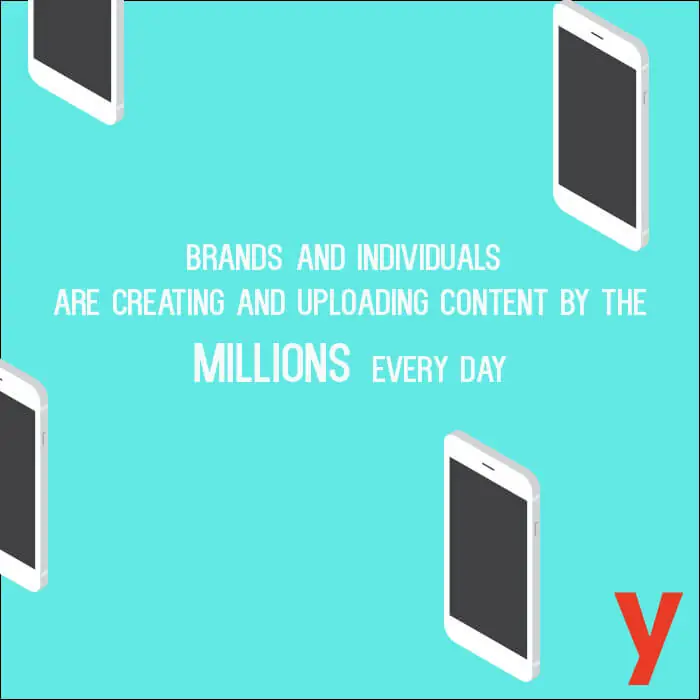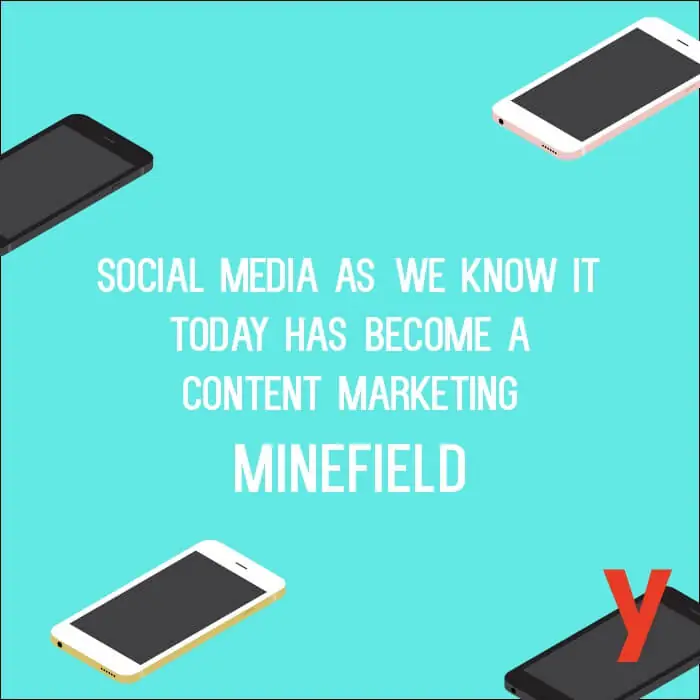 The downward trend in reach and engagement on social media is an undeniable fact felt by many businesses. And ironically, at the root of this are the users themselves; the brands and individuals uploading and creating content by the millions every single day. This level of supply and demand has fueled multi-billions in advertising dollars for giants like Facebook, and many a business Page scraping by with barely a Like.
The downward trend in reach and engagement on social media is an undeniable fact felt by many businesses. And ironically, at the root of this are the users themselves; the brands and individuals uploading and creating content by the millions every single day. This level of supply and demand has fueled multi-billions in advertising dollars for giants like Facebook, and many a business Page scraping by with barely a Like.
Aside from the sheer volume in curated and created content, social media as we know it today has become a content marketing minefield filled with the good, the bad, and the downright ugly. Memes, trends, slang—make it stop, brands.
When did marketers begin to believe social was the place to forgo quality over trending topics, long-term customer relationships over vanity metrics, thoughtful stories over 140 characters worth of branded hashtags?
Dictated by Calendars
It’s Halloween! Post. It’s Father’s Day! Post. It’s Thomas Jefferson’s birthday! Post?
When building out a content strategy in line with your brand, there’s a fine line between looking at a calendar for guidance and using a calendar to dictate each and every single message crafted. And that line is often crossed by companies looking for easy ways to insert themselves into online conversations.
 Take Chuck E. Cheese’s and their tweet about Jefferson. Sure, they’re known for birthdays but where does the relevancy lie beyond that? And more importantly, what is this type of content helping them to achieve with their customers in the long-run?
Take Chuck E. Cheese’s and their tweet about Jefferson. Sure, they’re known for birthdays but where does the relevancy lie beyond that? And more importantly, what is this type of content helping them to achieve with their customers in the long-run?
The moments when plotting by holidays and specific days of the week does make sense are when they’re seamlessly integrated into your larger brand story and message. Take JetBlue’s FlyBabies campaign on Mother’s Day for example. The airline cleverly highlighted what can normally be a very high stress experience for mothers with young children and turned it into something preferable for both parents and surrounding passengers alike. They took a very simple concept, a very real frustration felt by their passengers and used relatable concepts to shape memorable holiday-centered messaging.
Riding the Coattails of Pop Culture
Trending topics are engrained into the functionality of just about every social platform out there, which makes them incredibly easy to target. And for brands endlessly trying to pinpoint where their audiences’ eyes might be at any given time, current events seem like easier bets to place in the hunt for virality. More than anything however, they can be a gamble because with the opportunity for more people to see your good side comes the opportunity for more people to see your bad.
Celebrity deaths bring out the worst in brands on social. From Carrie Fisher to Prince, there’s no shortage of backlash to be felt for a company looking to showcase products and services during times of loss. This doesn’t mean there aren’t times when tributes on behalf of a brand can’t genuinely contribute in a positive way, but it’s certainly an instance where the risks should be heavily weighed against the rewards.
What the Kids are Saying Nowadays
Finding a way to incorporate the word “bae” into your brand name or slogan doesn’t make you relevant to millennials. Just like relating swiping on Tinder to choosing Pedialyte for hydration doesn’t make singles looking for action want to pour themselves a glass. Your audience is more than just the language they use, so if you want to give them social content they’ll remember you by, give them something that goes beneath the surface.
 Marriott sought to do just that by inviting four influencers to engage with their younger audiences using Snapchat. They spoke to these audiences through their eyes (literally) with video captured through Snap Spectacles. These influencer videos translated into actual experiences that encompassed so much more than just a hotel visit; they were branded stories by young adults for young adults.
Marriott sought to do just that by inviting four influencers to engage with their younger audiences using Snapchat. They spoke to these audiences through their eyes (literally) with video captured through Snap Spectacles. These influencer videos translated into actual experiences that encompassed so much more than just a hotel visit; they were branded stories by young adults for young adults.
It’s easy to get wrapped up in ‘best practices’ when it comes to marketing through newer and emerging channels. But sometimes it’s about staying true to branding 101 and cherry picking those quality moments of audience engagement over quantity. After all, there’s a “real market for intelligent, thoughtful work” as social media teams like those at NASA have found. Just because your brand may not have extraordinary photos of space or otherwise at your immediate dispense, doesn’t mean your content strategy can’t still shoot for the stars.




